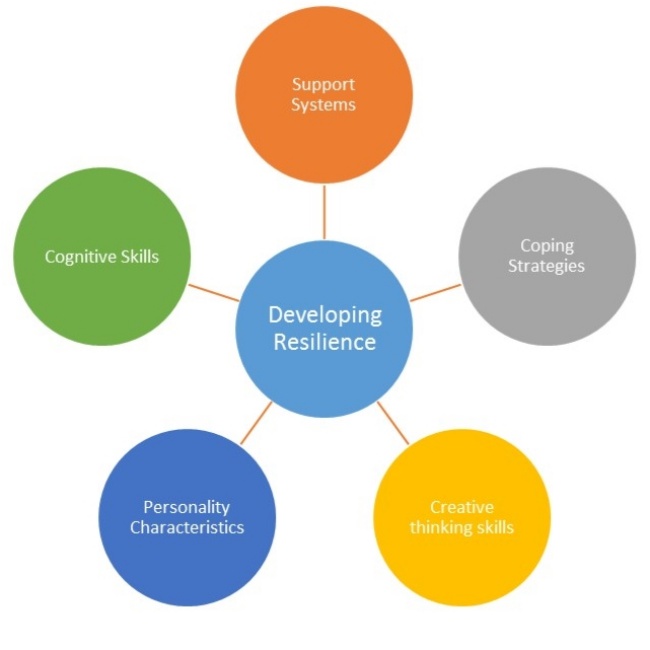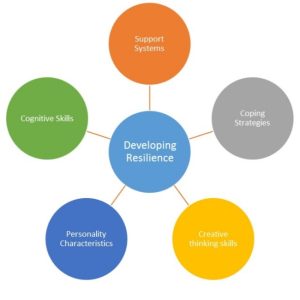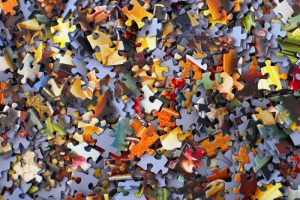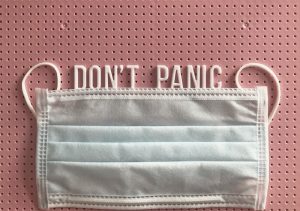Being able to carry on after failing is one part of developing resilience – another is to know how to learn from failure and avoid repeating patterns of mistakes.
Rather than focus on the negative, thinking about failure as a positive path to learning can really help us become more resilient and change our attitude to what constitutes ‘failure’. Here are some ways to help with that:
How to be resilient in the face of failure
Resilience is the counter to collapsing in failure. There is a rule of thumb for managing oneself in terms of resilience – the three Ms:
- Mindset – demonstrating ‘realistic optimism’ or developing ‘learned optimism’
- Minimise – chance of failure recurring is reduced to a minimum whilst recognising failure is linked to finding success
- Maximise – learning from failure to maximise value and demonstrate new behaviours.
Developing Resilience

Each of the above helps in coping positively with failure.
For instance cognitive skills include ‘bringing curiosity’ and ‘accepting and learning from feedback’. Creative thinking refers to the capacity to generate alternative options rather than be limited to one or two approaches.
How we learn
David Kolb’s idea of the learning cycle is helpful in thinking about how we learn:

Having had an experience it is helpful to talk or write about it (reflection), then consider how the learning from reflection might be translated into further action. Further action can then be tried. A continuous process of emerging theory being tested in practice, and practice being subjected to contextual scrutiny.
Oasis embraces the thinking and practice of Donald Schön in his concept of the ‘reflective practitioner’ – a sophisticated and applied notion of learning-whilst-doing. Practice is highly valued as something which draws deeply on our cognition, imagination, experience and capacity for critical reflection. It calls for a safe place to acknowledge mistakes, and in naming them, learn from them.
Such models reflect the experiences of some individuals, but don’t necessarily align with everyone’s ways of learning. Exploring and understanding how you learn can make a positive difference to how you work with failure and success.
Thoughts on learning from failure – and success
From research[1] we know that people:
- Learn at a faster rate if they consider both success and failure.
- Considering both success and failure creates richer mental models.
- After success, most is learnt when reviewing what went wrong.
- If failure occurs, so long as a review to deepen thinking happens, it doesn’t matter if the focus is on success or failure.
Creating the right atmosphere is critical for a session regarding learning from failure. Consider the role of self-disclosure to normalise failing, use storytelling approaches to build a shared understanding, create structure to increase safety. Agree and understand the ground rules and the purpose of any session.
Ask yourself the core questions about failure:
- What didn’t go well?
- What form of failure do you think it is?
- What contributed?
- What do others think contributed?
- How did you get involved?
- What was the sequence of events?
- What was the intention?
- What was the outcome?
- What feelings were involved?
- When did it end?
- When did it really end?
- When did it really begin?
- What has been learned?
It is also possible to learn from what has gone well – to make something that is already good even better.
Ask yourself the core questions about success:
- What has gone well?
- What worked?
- How did it come to work?
- How can I repeat it?
[1] 2007 from an article by Robert Sutton, Professor of Management Science and Engineering at Stanford University
[file url=”https://www.oasishumanrelations.org.uk/content/uploads/2018/05/Learning-from-Failure.pdf” title=”Failure as a Path to Learning: Putting Organisational Learning to Work” description=”Read more about learning from failure by downloading this white paper. It reveals what happens when organisations don’t learn, dimensions of failure and how to be resilient in the face of failure.”]











